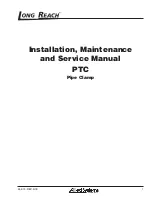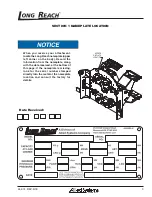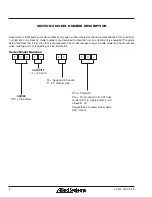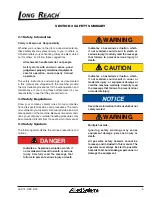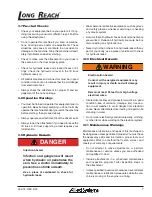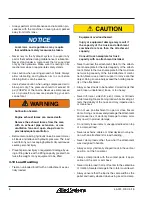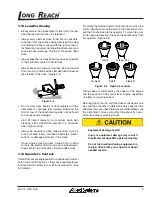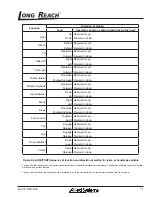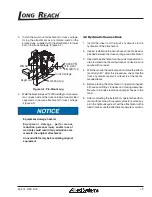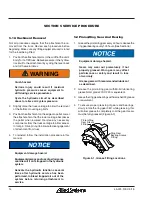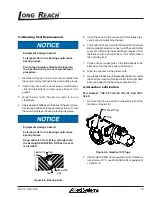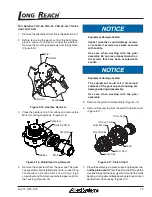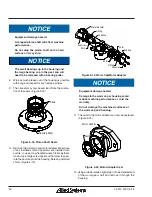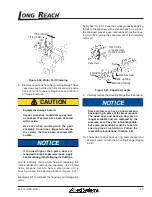
8
45-074, REV. 5/18
•
Always perform all maintenance and lubrication pro-
cedures with the machine on level ground, parked
away from traffic lanes.
NOTICE
Local laws and regulations may require
that additional safety measures be taken.
•
Never rely on the hydraulic system to support any
part of the machine during maintenance or lubrication.
Never stand under a component that is supported
only by the hydraulics. Make sure it is resting on its
mechanical stops or appropriate safety stands.
•
Use caution when working around hot fluids. Always
allow lubricating and hydraulic oils to cool before
draining. Burns can be severe.
•
Use extreme caution when using compressed air to
blow parts dry. The pressure should not exceed 30
psi (208 kPa) at the nozzle. Never use compressed
air on yourself. Air pressure penetrating your skin
can be fatal.
WARNING
Suffocation hazard.
Engine exhaust fumes can cause death.
Remove the exhaust fumes from the area
with an exhaust pipe extension, or use
ventilation fans and open shop doors to
provide adequate ventilation.
•
Before disconnecting hydraulic lines, be sure to lower
all loads and relieve all hydraulic pressure. The load
could fall on you, or escaping hydraulic oil could cause
severe personal injury.
•
Prevent personal injury or equipment damage by us-
ing a lifting device with a lifting capacity greater than
twice the weight of any equipment to be lifted.
3.12 Load Handling
•
Treat an unloaded forklift with an attachment as par-
tially loaded.
Equipment overload hazard.
Injury or equipment damage may result if
the capacity of the truck and attachment
combined are less than the attachment
capacity.
Consult truck nameplate for truck
capacity with an attachment installed.
•
Never overload the attachment. Refer to the attach-
ment nameplate for the rated capacity of the attach-
ment. Refer to the truck nameplate for the maximum
net working capacity of the truck/attachment combi-
nation. Never use a load to support or move another
object. Doing so can easily exceed the holding capac-
ity of the attachment.
•
Always check loads to be handled. Correct loads that
are broken, unbalanced, loose, or too heavy.
•
Never lift, lower, side shift, pivot, rotate, or tilt loads
while traveling. Repositioning loads while traveling af-
fects the stability of the truck and may impede vision
or clearances.
•
Do not use an attachment to open or close boxcar
doors. Doing so can severely damage the attachment
and cause loss of warranty. Damage to clamp arms
may result in product damage.
•
Do not carry loose items or unsupported loads on top
of a clamped load.
•
Never use chains, cables, or other devices in conjunc-
tion with an attachment for load handling.
•
Never clamp loads other than what the attachment
was designed to handle.
•
Always carry cylindrically shaped loads in the vertical
position, not the horizontal.
•
Always clamp loads with the contact pads, if appli-
cable, not the arm or arm base.
•
Never rotate a load that is off center to the centerline
of rotation. Severe damage to the rotator could result.
•
Always ensure that the load is the same width as the
pallet and neatly stacked when using a carton clamp.

